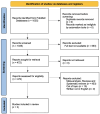Combine Surgery and In Vitro Fertilization (IVF) in Endometriosis-Related Infertility: When and Why
- PMID: 39685807
- PMCID: PMC11642892
- DOI: 10.3390/jcm13237349
Combine Surgery and In Vitro Fertilization (IVF) in Endometriosis-Related Infertility: When and Why
Abstract
Endometriosis is a chronic, estrogen-dependent inflammatory disease characterized by the presence of endometrial tissue outside the uterus, causing pelvic pain and infertility. Infertility arises mainly due to inflammatory mediators in the peritoneal fluid, contributing to local hypoestrogenism, which appears to exacerbate chronic inflammation and sensitize pelvic nerves. Local hypoestrogenism within endometriotic lesions contrasts with the systemic estrogen-dependent nature of the disease. This localized reduction in estrogen levels, resulting from an altered hormonal response, can contribute to the altered immune response and inflammation characteristic of endometriosis, potentially exacerbating tissue damage, promoting fibrosis, adhesions, and endometrioma formation that distort pelvic anatomy, and affecting fertility. Chronic pelvic pain and dyspareunia further complicate conception in affected women. In vitro fertilization (IVF) and laparoscopic surgical excision of endometriotic lesions are the two primary management options for endometriosis-related infertility, although current data provide limited guidance on when to prefer one approach over the other. It is generally accepted that treatment strategies must be individualized according to the patient's wishes, symptomatology, age and the preferences of the woman and the couple. Timely intervention and structured follow-up for symptomatic women wishing to conceive may maximize conception rates within two years post-surgery, while minimizing the need for repeated interventions, which should be avoided. On the other hand, first-line IVF is particularly viable in cases of unoperated deep infiltrating endometriosis in asymptomatic women, or for those ineligible for or opposed to surgery. This review aims to evaluate the most recent data on endometriosis-related infertility to identify evidence-based key points that can enhance tailored management in clinical practice.
Keywords: endometriosis; in vitro fertilization; infertility.
Conflict of interest statement
The authors declare that they have no conflict of interest.
Figures




References
-
- Martire F.G., Giorgi M., D’Abate C., Colombi I., Ginetti A., Cannoni A., Fedele F., Exacoustos C., Centini G., Zupi E., et al. Deep Infiltrating Endometriosis in Adolescence: Early Diagnosis and Possible Prevention of Disease Progression. J. Clin. Med. 2024;13:550. doi: 10.3390/jcm13020550. - DOI - PMC - PubMed
-
- Centini G., Schettini G., Pieri E., Giorgi M., Lazzeri L., Martire F.G., Mancini V., Raimondo D., Seracchioli R., Habib N., et al. Endometriosis-Related Ovarian Cancer: Where Are We Now? A Narrative Review towards a Pragmatic Approach. J. Clin. Med. 2024;13:1933. doi: 10.3390/jcm13071933. - DOI - PMC - PubMed
Publication types
LinkOut - more resources
Full Text Sources

